
One of the problems of the literary world is the treadmill. Books come out and are reviewed by people who may have read every work of the author’s, or no other works at all. More often than authors would like, reviews seem to have been written by people who haven’t even read the volume under review.
But, then, the literary world doesn’t linger long. Rarely does it even allow itself a look in the rear-view mirror, to work out what an author has been trying to do. Not just asking questions such as whether this book is better than the last, or which are the duds, but more probing ones about the author’s vision and purpose.
What is the truth that he or she is trying to get to? Is it a local truth: one that might be recognised only by those people who share the particular experiences, sympathies or vantage point of the author? Or is the author getting at some universal truth, where the specific circumstances of the characters or plot are standing in for something far greater than they themselves represent?
I think six novels in is a good vantage point from which to survey any novelist’s output. And last year, one of Britain’s most acclaimed novelists, Alan Hollinghurst, published his sixth, The Sparsholt Affair. Now in his mid-sixties, Hollinghurst has produced a slow but regular stream of work, averaging a book every six years since he published his debut, The Swimming Pool Library, in the 1980s. Now, three decades later it is possible for us to take that step back, have a look at his career, and see what he has thus far achieved. It is certainly not what might have been have expected at the outset.
Britain came slightly late to the gay fiction party. America got there first, of course. Yet until Edmund White and Andrew Holleran got going, even in America the diet had been predictable and consistent, mainly consisting of slimly disguised autobiography churning around the theme of the doomed homosexual. What set that mould in place is up for debate. Thomas Mann is an obvious suspect. A simpler answer might be ‘the law’.
By the time the great American author James Baldwin published Giovanni’s Room (1956), the life of the fateful, soon-to-die homosexual had become a fictional sub-genre. Even a writer with the courage of Christopher Isherwood had trouble breaking it. Though A Single Man (1964) may have been fairly open for its time about the nature of the protagonist’s sexuality, the title character’s same-sex lover is dead from the start. It was still as though the only alibi any author could possibly offer for writing about gay love was to say that at least their characters would never be happy, and would most likely die soon anyway.
It took Holleran’s heady novel of gay New York, Dancer from the Dance (1978), and White’s first coming-out novel, A Boy’s Own Story (1982), for gay fiction to smash the literary stereotype. Holleran depicted an intoxicating and ecstatic world of unapologetic sex in the bath-houses and cruising areas of New York just before AIDS ransacked that landscape. White, meanwhile, broke through with his story of an ordinary young man’s coming out, something that created a branch of literature which every gay man and woman could relate to, and most for a time seemed intent on adding to.

When the The Swimming Pool Library was published in 1988, Alan Hollinghurst received praise from these forebears across the Atlantic. Here was a work not of fated, historic loves, but of sexually unapologetic Londoners living, loving and shagging in the decade in which the book was published. The central character, William Beckwith, is attractive, rich, talented and aristocratic enough to have inhabited an EM Forster novel. But couldn’t be further removed from his predecessors.
What gives the novel its original aroma is the societal cross-section of experience which Hollinghurst uses to bring his characters alive. Beckwith’s life is privileged and uninhibited, spanning from the exquisite to the dirty, the opera to the dive. The novel’s publication was a watershed moment in British fiction.
But there were corners of the novel that did mark it out as a debut. The most obvious, re-reading it 30 years after its publication, is the amount of technical construction the author seems to want to lean on. Hollinghurst cannot resist the urge to throw in a clear plot – including a resolution of a kind even though the work does not need it. But the first-time novelist obviously did.
If first novels are nearly always autobiographical, then it’s easy to discern the author’s interests in this one. For many readers, then and now, it’s these juxtapositions are precisely the thrill of the book. Any ‘out’ homosexual of Hollinghurst’s generation would recognise the gilded gutteriness of the world he describes.
Occasionally he lays it on a little thick. One of the climaxes of The Swimming Pool Library comes when Will Beckwith tries to visit his black boyfriend on a council estate and is set upon by a gang of racist thugs. The character, like his creator, is a fan of the acquired-taste exquisite writer Ronald Firbank, and when Will is attacked there is a first-edition (with dust-jacket) of The Flower Beneath the Foot in his pocket. Beaten to the ground, he sees the pages of the volume fanning out on the ground. A symbol of Beckwith’s (and Hollinghurst’s) world, certainly, but a slightly over-polished one.
 Hollinghurst followed-up his acclaimed first novel by reaching backwards for inspiration. The Folding Star (1994) depicts a disaffected 33-year old who applies to become a private tutor in a Flemish town. The plot is thick with art and sex, and a matchlessly atmospheric description of an Antwerp-like town. The plot is Death in Venice, albeit a Death in Venice in which Tadzio is 17 and Aschenbach manages to have sex with him. After which slightly iffy climax, Hollinghurst pulls the novel to a close with one of the bleakest, most inexplicably cruel endings of any book I have read (a judgement that doesn’t forget the collected works of Ian McEwan).
Hollinghurst followed-up his acclaimed first novel by reaching backwards for inspiration. The Folding Star (1994) depicts a disaffected 33-year old who applies to become a private tutor in a Flemish town. The plot is thick with art and sex, and a matchlessly atmospheric description of an Antwerp-like town. The plot is Death in Venice, albeit a Death in Venice in which Tadzio is 17 and Aschenbach manages to have sex with him. After which slightly iffy climax, Hollinghurst pulls the novel to a close with one of the bleakest, most inexplicably cruel endings of any book I have read (a judgement that doesn’t forget the collected works of Ian McEwan).
The Folding Star deserved – and received – huge praise. It was awarded the James Tait Black memorial prize and shortlisted for the Booker. Which suggested that Hollinghurst had survived the famous second novel problem. Though, as it turned out, he had simply saved that for his third.
When it was published (in 1998), The Spell bemused readers. Some feared they must have missed a layer in what is – charitably – a comedy of manners. One friend read it three times, certain that there must have been some depth to the work that he had missed. His fear was unfounded.
The cast of The Spell is almost entirely gay. There is a gay father who also has a gay son, and the gay father lives in a house in the country with his gay lover whose own ex-lover (Alex) ends up going out with his partner’s gay son (Danny). At a house at the end of the garden in this typical English village is a young handyman who is gay and rents himself out to anybody with the means to pay. The one big development comes when the slightly geeky ex-boyfriend is introduced to the joys of drugs at a nightclub by the gay son and is rejuvenated by the discovery. Hollinghurst sprinkles descriptive magic far above his subject matter. Looking back over the first night in which he took ecstasy, Alex reflects on:
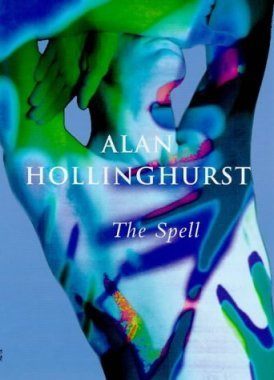 The blearily milling boys smelling of sweat and smoke, pupils huge and bewildered by daylight, fag-ends imbedded in chewing-gum stuck around the welts of their shoes – the rapturous novelty of it all. Absurd though it was, with the same beautiful young man snoring naked bedside him, he longed to be back there again, looking out for the improbable taxi that would take them home together for the first time, in the magically protracted hour when he knew that his life had been given back to him.
The blearily milling boys smelling of sweat and smoke, pupils huge and bewildered by daylight, fag-ends imbedded in chewing-gum stuck around the welts of their shoes – the rapturous novelty of it all. Absurd though it was, with the same beautiful young man snoring naked bedside him, he longed to be back there again, looking out for the improbable taxi that would take them home together for the first time, in the magically protracted hour when he knew that his life had been given back to him.
Much of that passage could have been written by any novelist. Few others, though, could have placed that ‘improbable’ and then come up with ‘the magically protracted hour’.
Still, it is safe to say that The Spell was off-putting for a lot of readers. Many – especially heterosexual ones – must reach the baffled by this world and wondering what the point of it all is. Presumably it is one that Hollinghurst at least partially inhabited in the decade before The Spell: historically and financially privileged, vaguely sybaritic and startlingly shallow.
What was frustrating were the obvious depths which Hollinghurst chose not to explore, though he could have done so better than anyone.
The slightly gauche juxtapositions of The Swimming Pool Library and the resonant deeps of The Folding Star had promised that, if he could capture it in the right form, from the right angle at just the right moment, Hollinghurst might somehow capture it all. What, for the best part of 200 years, people have thought the novel might be in a unique position to capture. What even Lord Byron struggled to define, and finally italicised in a letter to a friend in 1819. Writing about his epic poem Don Juan, in an era when poetry still seemed the best medium in which to struggle to communicate the essence of life, Byron boasted of his own work:
It may be bawdy — but is it not good English? It may be profligate — but is it not life, is it not the thing? — Could any man have written it — who has not lived in the world? — and tooled in a post-chaise? in a hackney coach? in a gondola? against a wall? in a court carriage? in a vis a vis? — on a table? — and under it?
The contents of Hollinghurst’s first novels suggested that their author was keen to collect and describe the variety of life experiences that also appealed to Lord Byron, but that he had not so far been able to build them into anything more than these elements. He could pinpoint the life of a particular type of gay man, but he could not speak to all that much beyond it. He could record everyday life, but not encompass it.
He has never been a fast writer. A common acquaintance described holidaying with Edmund White and Hollinghurst, recalling how White would scribble constantly, filling notepad after notepad, while Hollinghurst would work at a sentence or two at most in a day. The carefully polished final product was to become a trademark. But the results justified the wait.
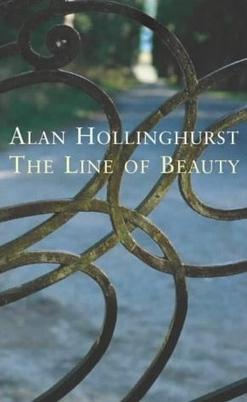 Six years after The Spell came The Line of Beauty (2004). The novel was unanimously praised by critics and readers alike. It won the Booker Prize (a first for a book whose central characters were all gay and whose living breathing sex lives were central to the plot) and was even made into a BBC mini-series.
Six years after The Spell came The Line of Beauty (2004). The novel was unanimously praised by critics and readers alike. It won the Booker Prize (a first for a book whose central characters were all gay and whose living breathing sex lives were central to the plot) and was even made into a BBC mini-series.
All this helped create a meeting-point between author and a wider public. The reading public moved towards Hollinghurst in greater numbers than ever before; and he moved towards them, by coming out of the narrow thoroughfares he had explored to date to write about a wider variety of life. The Line of Beauty is not only a description of gay life in the 1980s, but a pin-point depiction of Thatcher’s Britain. One that does not neglect the heterosexual community as Hollinghurst’s previous novels appeared to.
It revolves around the vaguely unlikeable figure of Nick Guest – a scholar of Henry James – who ends up living slightly parasitically in the household of a friend whose father is a rising politician. The sustained description of the household of Gerald Fedden MP is one of the most accurate depictions of a politician’s life since Anthony Trollope.
The work is packed with crystalline social observations. There is, for instance, the scene at the local fete at which Fedden enters the welly-wanging competition and at first performs poorly. He ends up paying for round after round until he has wanged the welly far enough to see off any and all competition. Some years after reading that scene, I went bowling with a politician in Washington DC and the déjà vu washed across me as I watched my opponent. When Hollinghurst finds a type he nets, pins and frames them as calmly as a lepidopterist would.
At another point, Nick is leaving the Fedden household with his new black boyfriend, Leo. At that precise moment, Gerald’s mother, Lady Partridge, draws up in a cab. There is no way they cannot meet. Nick introduces Leo to the grande dame. Hollinghurst writes:
She smiled and said, “How do you do?” in an extraordinarily cordial tone, in which none the less something final was conveyed – the certainty that they would never speak again.
In The Line of Beauty, Hollinghurst’s cool forensic eye falls not only over the politics of sex and race but also on a certain type of Englishness. His class observations in particular are as subtle in their diagnostic gradations as anything in Balzac or Proust. When Fedden ends up in the constituency of Guest’s own parents, he visits their house. Guest’s father takes the drinks orders and then brings them in on a tray as though they were a great treat. This is a social world far removed from the grand rooms of the Fedden house where the drinks tray is always at hand. It is the 1980s, but these things still deeply matter and Hollinghurst makes sure they leave a taste in the reader’s mouth like metal.
The local and specific becomes something near the universal. Even the bravura description of Nick Guest inviting the Prime Minister to dance (after he is a couple of different lines of beauty in) could be a fable of any young man with the whole world ahead of him taking gambles and high-wire risks, with no understanding of the consequences.
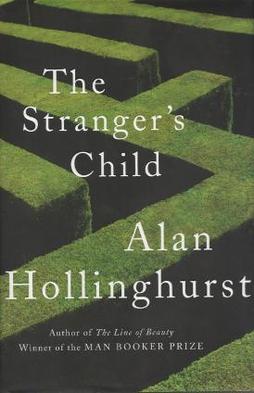 There, in a way, Hollinghurst might have rested: Booker Prize and BBC serial under his belt. But what he did next was probably his most significant book to date, and one of the most startling creative works of recent years.
There, in a way, Hollinghurst might have rested: Booker Prize and BBC serial under his belt. But what he did next was probably his most significant book to date, and one of the most startling creative works of recent years.
The plot is separated into five episodes which cross the 20th century, finishing in our own, and starts with a young poet undisguisedly modelled on the young Rupert Brooke, named Cecil Valance. He writes a Brooke-ian poem called ‘Two Acres’ which comes to represent the idyll before the First World War. The war consumes him, and he is memorialised in marble.
Across a century, we then follow the passions, traces and impacts of that life: from the grieving mother defrauded and consoled by mystics, the early hagiography of friends, the biographical investigations of a subsequent generation and finally the unsettling attempts at ownership by ‘queer theorists’, among others.
If this sounds like a niche career or world, it both is and is not. The Strangers’s Child manages to depict, in the fullest manner imaginable, how the life of one young man burns, radiates, cools and fades, through the people he loved and who loved him, the people who did not know him but still fight over him and finally to those who do not care about him or remember him at all.
The background is the century of the war to end all wars, and Hollinghurst has an almost terrifying mastery of this canvas. There are unforgettable descriptions within it. And while the surface plot is completely absorbing, equally riveting are the stylistic glitterings above that surface plot and the vast depths sensed beneath.
In the days it took me to read The Stranger’s Child, when it came out in 2011, almost everything else went on hold. Very few novels have had a similar effect. I ended up asking to be left alone to finish the book over a weekend. The neglect of everything else was total. What is more – and this may be the nearest I can get to a definition of the effect of a masterwork – the impact on finishing it was something like devastation, or mourning.
There may be several reasons for this. One is the fact that The Stranger’s Child is a biographer’s novel: a novel written almost precisely for anyone who – as I have – has ever worked in, or been absorbed by, that peculiar genre. For The Stranger’s Child addresses one of the fundamental thing that disturbs biographers: the envy and the fear of the things that fall between – the moments that are unrecorded and unrecoverable. Who mattered more than the records show? Who matters less than their own testimony suggests? What happened then? And what, in the end, matters at all?
For while biography holds out the promise of mastery and the illusion of omniscience, it relies at best on the most chaotic accident, and happenstance built upon happenstance. Almost all biographers hold out hope, of course. Hope that the missing pieces of the life they are trying to discover will reveal themselves. That the missing trove of memoirs or letters will turn up.
But however well documented a life, the true picture is unrestorable once the subject is gone, assuming it were recoverable before. Behind this realisation lingers this fear – a fear which biographers only have in slightly higher doses than everyone else – of how, if at all, we can ever understand the life of another person. We might read all their works, tear through their letters and even sneak our way through their diaries and bills. But we will never know whether their life turned on a conversation on some roof-top, a chance remark overheard, or an encounter never spoken of again.
And though the worlds The Stranger’s Child depicts are often rarefied, they are without any doubt ‘life’. And in its descriptions of the intricacies, joys, fall-outs, and deceits of love – in its amorous, familial, platonic and literary varieties – it undoubtedly captures ‘the thing’ that Byron saw as the truest defence for writing. Not just the capturing of the experience of life, but the capture of some other, greater truth.
Hollinghurst ends by digging at the haunting question of whether the truth – even the truth of one life – counts for anything or not. What does it matter? The human body disappears, and the papers all follow at some point. Eventually all reduces down to just one question: the question of, as Rilke once put it, whether the outer space into which we dissolve tastes of us at all?
The Stranger’s Child is a novelist’s attempt to try to answer that question. And Hollinghurst succeeds, in part, through the technical device of showing us the gaps between his snapshots across the century. Between each of his episodes characters hold onto misunderstandings they have developed. A crucial meeting falls short because one of the parties has no intention of giving up the materials that the pushy young visitor hopes to pry from him. The plot does not resolve, because like our lives it cannot be ‘solved’.
The reader gets to see where various of the lives and reputations might have gone, had people not behaved in the difficult, thwarting, multiply-propelled ways they do. The result is like looking at a silhouette of a life, but a silhouette that captures its subject more truly than the most high-resolution likeness. It is, in other words, a vindication of fiction, because it is something that no other medium could do.
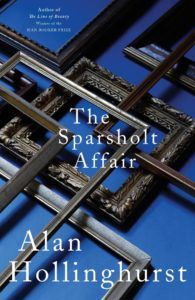
Last year, after the usual wait, Hollinghurst published his sixth novel: The Sparsholt Affair. He had previously speculated he might try to write a novel in which none of the characters was gay. He failed. But between his first and his sixth novel this aspect of the lives of his characters has receded into background importance. While some of his American forebears were still writing novels that would have got stuck in the ‘gay fiction’ section of a bookstore, Hollinghurst’s had (through subject matter as well as success) by this stage gone out and into the world.
The Sparsholt Affair does open with a gay affair at Oxford in the early days of the Second World War, and proceeds episodically until the present day. And to a number of readers – this one included – it felt as though Hollinghurst was re-writing a novel he had just published. But it is so deftly done that, at worst, it has the effect of a masterful re-orchestration.
The plot evolves from the brief affair between the athletic undergraduate David Sparsholt and his pining contemporary, Evert Dax, whose father is a celebrated middle-brow novelist. The reader is allowed few details of the affair, but does see how it reverberates across the ensuing decades.
As the consequences of the affair play out, the least likely of the pair (Sparsholt) ends up involved in a sex scandal which ruins his career and envelopes everyone in a Profumo/Thorpe-like cloud. Again, the nature of the scandal is never made completely clear. Unlike his earlier novels, in which he spells out the most crucial parts of the plot, in The Strangers Child and The Sparsholt Affair Hollinghurst resists.
Early on in Sparsholt, between the blackouts and fire-watching at their Oxford college, a drawing is made of the naked torso of David Sparsholt. Years later, his son, Johnny, glimpses the work in another character’s house. “Ancient pornography – is there anything more sad” another character says to Johnny:
‘Oh…’ said Johnny, as if nervously agreeing.
‘Or perhaps you like it,’ said Denis.
‘Well’, said Johnny, ‘no, not really my sort of thing,’ but seeing it almost as a symbol of the London life – it could certainly never have hung in his father’s house, or even his mother’s.’
Johnny doesn’t realise that the drawing he is looking at is of his father. But the reader sees how just as David would never have displayed the painting – even though he was its subject – nor would his son, a generation later. The echoes are still being heard.
This is a core aspect of Hollinghurst’s style: that novelistic technique which sadistically keeps the main events and denouements concealed from the characters, as well as the reader. We are shown the bits in between, but not the crucial junctures. We have to reverse-engineer an understanding of the scandal from the scraps we are thrown over the decades that follow. Certainly we get some picture. Perhaps even the picture. But we miss what might be expected to matter most, as do the characters who have to live in the scandal’s wake.
People miss what turn out to be decisive events for their own lives, but equally others fail to open up for the edification and gratification of others. The man in whose house Johnny sees the drawing of his father could spill the facts. He is the only person alive who could. But he doesn’t. Eventually nobody will know. And then nobody will care. The picture will find its way to a junk room or a scrap heap. Very little retains any value after the departure of those who gave value to it.
This technique reinforces a key part of Hollinghurst’s world. People keep things to themselves. They often have no desire to elucidate. They own things they do not want to share and often share things they do not want. Other people – other characters – have to make sense of what they can with what information they have, based on a picture whose scope and meaning are never revealed to them.
If there is a clear triumph in Hollinghurst’s art so far, it is here. It is in finding a way to justify the novel at a time when its remaining possibilities have been doubted. Because if the purpose of the novel is, like all writing, to try to get to the essence of life, of ‘the thing’ (to explain it, capture it, or frame it) then that is something Hollinghurst has accomplished as much as any other writer now working. And there is a pleasing trajectory of its own in all of this. That a novelist who started off being noticed for his depiction of the world of one minority did not get stuck in one sub-section of the bookshops, but ended up finding a recognisable way to depict all of our lives as they are actually lived.





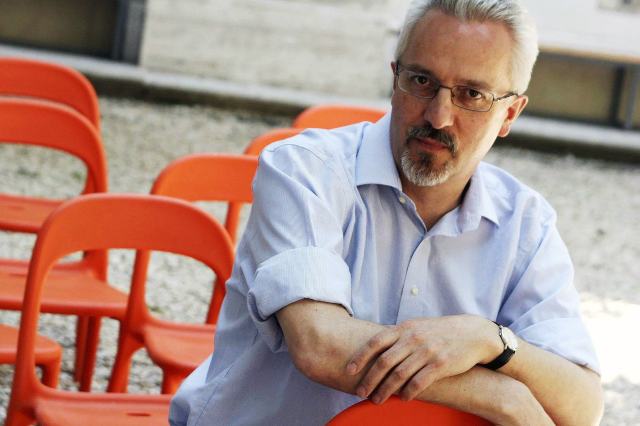




Join the discussion
Join like minded readers that support our journalism by becoming a paid subscriber
To join the discussion in the comments, become a paid subscriber.
Join like minded readers that support our journalism, read unlimited articles and enjoy other subscriber-only benefits.
Subscribe